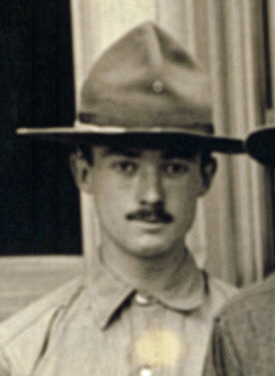(Evanston, Illinois, November 18, 1896 – Geneva, Illinois, December 7, 1963).1
Raftery’s father, Edmond Raftery was born in England; he emigrated to the U.S. and in 1894 married Kate G. Howard in Louisville, Kentucky. Her grandfather was also born in England; her father’s family founded an important shipbuilding company on the Ohio River near Louisville.2 John Howard Raftery was the couple’s only child. The family settled in Illinois where Edmond Raftery was employed by the Rathbone Sard Stove Company. It was probably family connections that prompted him to travel with his wife and son to England three times before 1910.3 John Howard Raftery was one of the few men of the second Oxford detachment who had been in Europe before 1917.
Raftery attended Chicago Latin School and the Hoosac School, a private boarding school in New York where Joseph Kirkbride Milnor also studied.4 Raftery entered Princeton with the class of 1919. He was a student at the privately funded Princeton Aviation School, which had been established in the spring of 1917 to train Princeton students, and then at the government-run Princeton School of Military Aeronautics which superseded the Aviation School in June 1917.5 When Raftery’s Princeton S.M.A. ground school class graduated August 25, 1917,6 he was among the cadets from this group who chose or were chosen for training in Italy and thus among the 150 cadets of the “Italian” or “Second Oxford Detachment” who sailed to Europe on the Carmania. They departed New York on September 18, 1917, bound initially for Halifax, where the Carmania joined a convoy; the convoy set out on the Atlantic crossing on September 21, 1917. The men of the detachment, travelling first class, had plenty of leisure, apart from submarine duty towards the end of the voyage and daily Italian lessons conducted by Fiorello La Guardia, who was travelling with them.
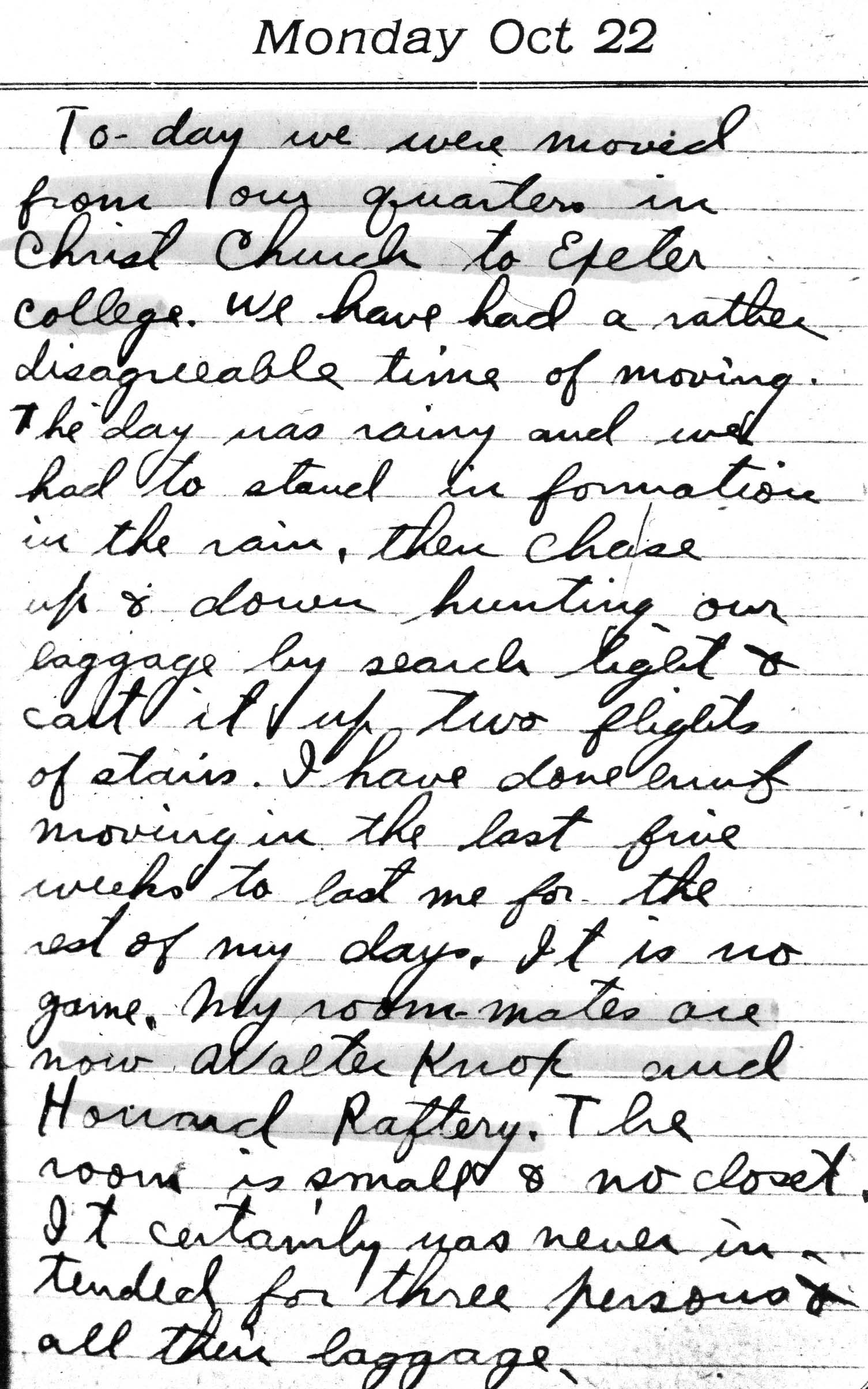
When the Carmania docked at Liverpool on October 2, 1917, the cadets learned, to their initial but not lasting dismay, that they would not go to Italy but to Oxford, where they would repeat ground school at the Royal Flying Corps’s No. 2 School of Military Aeronautics. The men were initially housed at Oxford in Christ Church College and The Queen’s College; I find no record of which group Raftery was in. But when all of them were moved to Exeter College on October 22, 1917, he roomed with fellow Princetonians Walter Burnside Knox and William Hamlin Neely.7
After a month at Oxford, the detachment was divided into two groups, the much smaller of which went to Stamford to begin flying training, while the vast majority, including Raftery, set out on November 3, 1917, for Harrowby Camp near Grantham in Lincolnshire, where they were to attend a machine gunnery school. Parr Hooper, also sent to Grantham, remarked: “It looks like we got sent here because there was no other place to send us to—playing for time.”8 As nearly half of the twenty men posted to Stamford, all selected by Elliott White Springs, had been students at the Princeton Aviation School, Raftery might have anticipated going with them, but for whatever reason he, Charles Edward Brown, Edmond Thomas Keenan, and Knox were not among the Aviation School students chosen by Springs.9
At Grantham Raftery initially shared a hut with Leslie A. A. Benson, Laurence Kingsley Callahan, John MacGavock Grider, Thomas John Herbert, Clarence Horn Fry, Finley Austin Morrison, and Joseph Raymond Payden.10 On November 19, 1918, after a two-week course on the Vickers machine gun, fifty places opened up at squadrons, and Callahan, Fry, Grider, Herbert, and Morrison were among those posted. Raftery, however, along with Benson and Payden, remained at Grantham through November and completed a second two-week course, this time on the Lewis machine gun.

Finally, on December 3, 1917, the remaining cadets were posted to squadrons and training stations. Raftery was one of a small group assigned to No. 1 Training Depot Station at Stamford, where the initial group of twenty cadets had been posted from Oxford a month previously. The others in Raftery’s group were Linn Humphrey Forster, Keenan, Burr Watkins Leyson, and Charles Francis Moore.11 Assuming their training resembled that of Springs’s earlier group, they would have received initial instruction on the Curtiss JN-4, which would have been familiar to Raftery and Keenen, as it was the plane that had been used at the Princeton Aviation School; they would perhaps have moved on to Avros. In early January, Raftery flew at least twice as a passenger in a DH.6 piloted by Springs, who had been drafted in briefly as an instructor before he was posted to London Colney.12
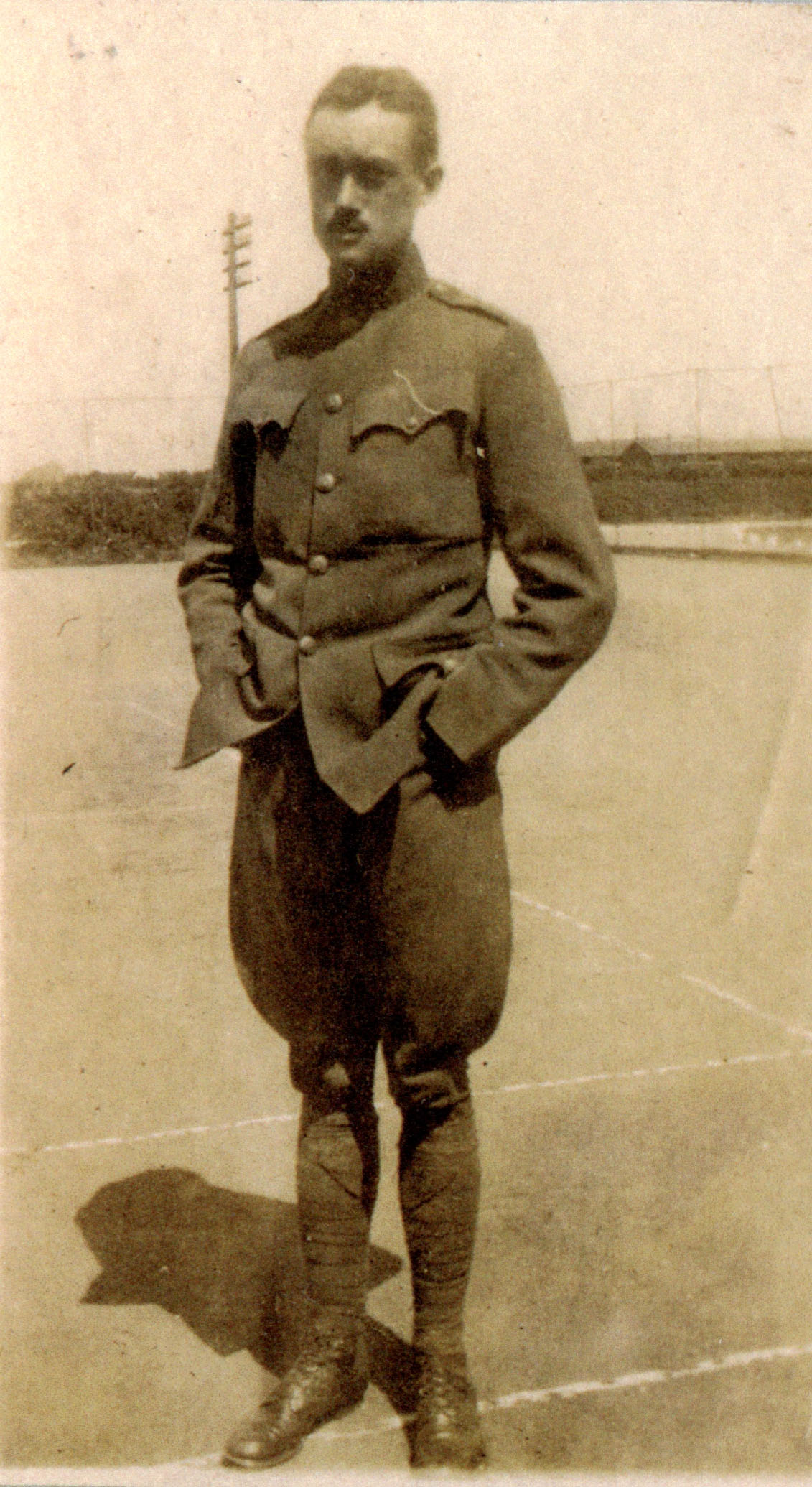
There is no clear documentation of Raftery’s further training, but the caption of a photo of him kept by Payden indicates he was posted for a time to Waddington. Assuming he was at Waddington, he would have had the opportunity for extensive training on DH.4s, the British version of the plane he would fly operationally. Raftery progressed fairly quickly through the initial stages of his training and by the latter part of March was recommended for his commission—his was among the many recommended in ten cables from Pershing between March 30 and May 4, 1918, that were finally confirmed en masse on May 13, 1918.13 Raftery was placed on active duty on May 25, 1918.14
Raftery was one of a large group of pilots ordered in early July 1918 to travel from London to Issoudun, where the American 3rd Aviation Instruction Center was located.15 Shortly after his arrival at Issoudun, however, he and nine other pilots, including Allen Tracy Bird, Anker Christian Jensen, and Edmond Thomas Keenan of the second Oxford detachment, were ordered to the 2nd Corps Aeronautical School, an aerial observation school at Chatillon-sur-Seine.16 Here they served as staff pilots helping to fly and train observers.17 Information is sketchy, but it appears that the planes they flew were mainly Dorand A.R.s.18
In mid-August Raftery and Jensen left Châtillon for the front. Along with fellow second Oxford detachment members Edward Addison Griffiths and Edward Russell Moore they joined the U.S. 8th Aero Squadron at Amanty on August 18, 1918; they were soon followed by Newton Philo Bevin, Uel Thomas McCurry, and Hilary Baker Rex; Albert Elliott Parrish would arrive in September.19 The 8th was an observation squadron flying (American) DH-4s; it had been at Amanty since the last day of July, attached to the I Corps Air Service of the American First (and at that time only) Army. The squadron was now doing intensive training, including making flights over the lines. On August 31, 1918, as part of the planning for the St. Mihiel Offensive, the 8th Aero was transferred to IV Corps and moved to Ourches-sur-Meuse, where the IV Corps Air Service was based.20 A roster of commissioned personnel dated September 10, 1918, shows Raftery among the six pilots of A flight, led by Moore; Raftery’s observer is John Harold Mulherin and his plane is number 4.21
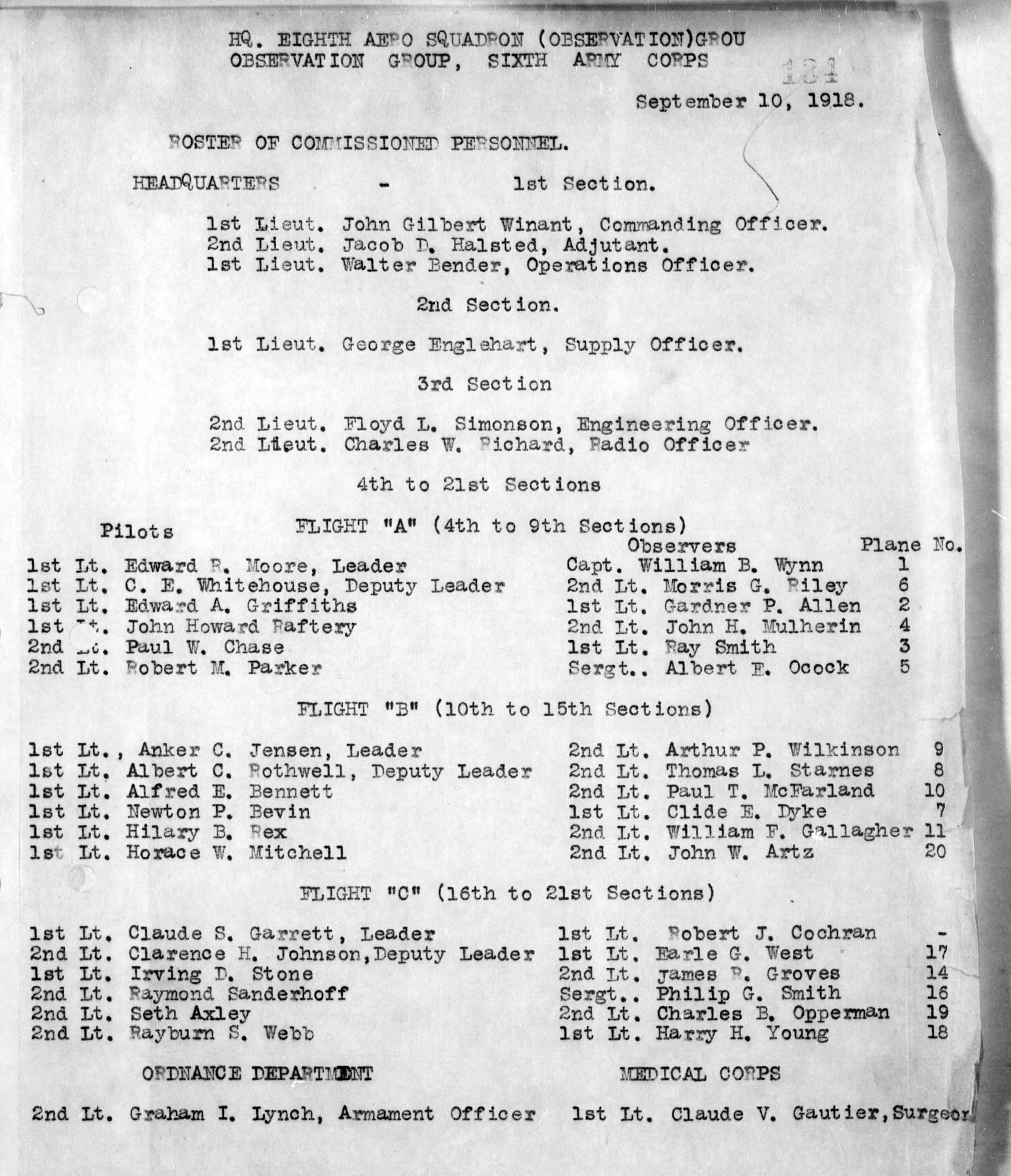
During the St. Mihiel Offensive, the 8th Aero was assigned to assist the IV Corps’s 1st Division, which was at the westernmost part of the American line on the south front of the St. Mihiel salient.22 The offensive to reduce the salient opened in the early hours of September 12, 1918, in abysmal weather; the squadron C.O., John Gilbert Winant, reported that on the 12th and 13th planes of the 8th Aero “were in the air for thirty-six hours and thirty minutes . . . and twenty-four separate missions were accomplished.”23 There appear to be no official reports of the individual missions flown by the 8th Aero during the offensive, which lasted until September 16, 1918, but Jensen’s log book indicates that he flew three missions on the twelfth, and it seems safe to assume that Raftery was similarly active.24
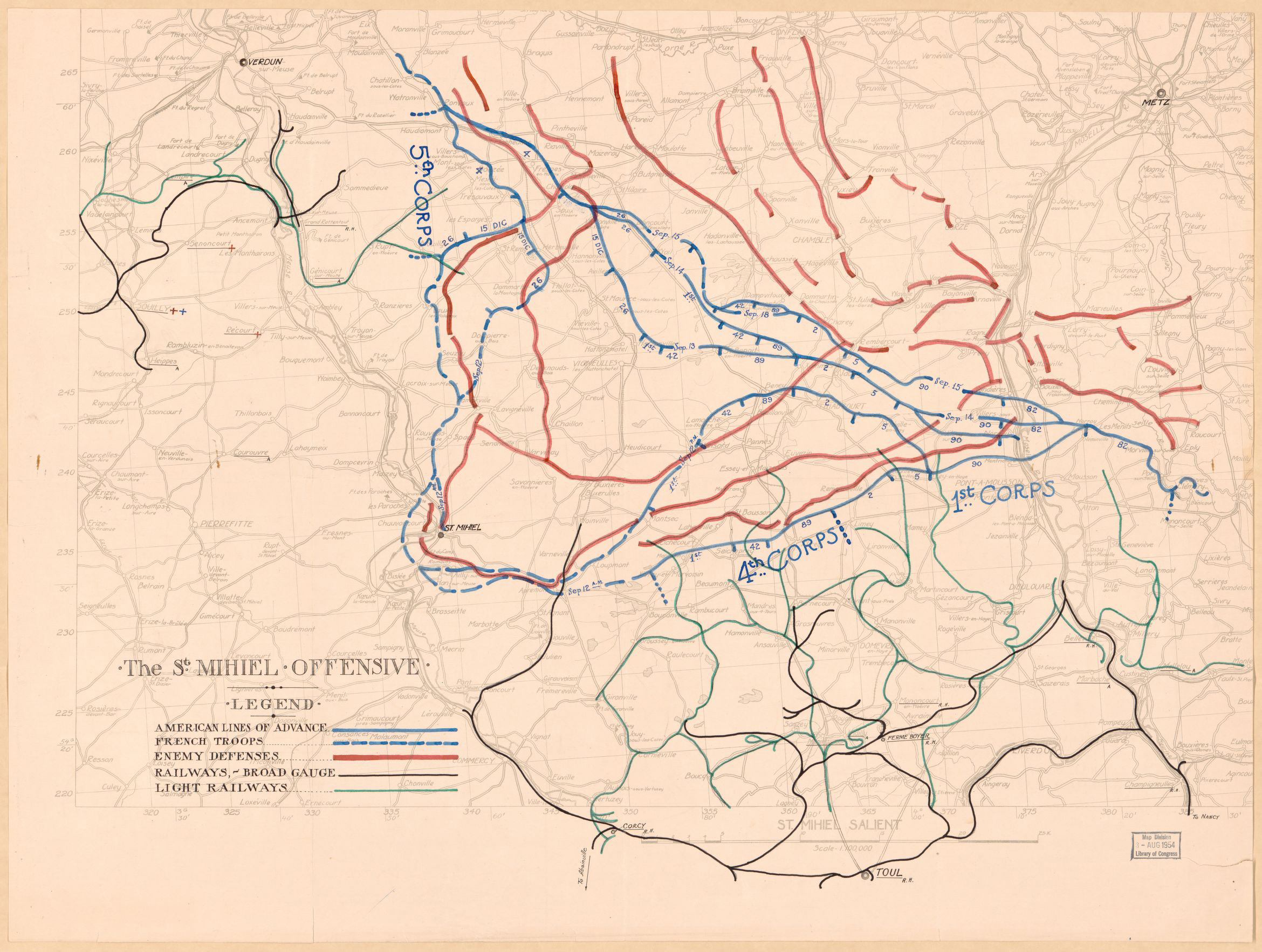
A photo mission was scheduled to take a strip of German territory important in the eyes of our army, but early morning clouds and drizzle seemed to prophecy a dead day. . . . Around lunch-time, encouraged by a bit of blue sky here and there Lieut. Moore the flight leader decided to chance it. . . and three machines taxied onto the field in position, Moore pilot and Allen observer in the leading machine containing the camera, Parrish and [Edward Henry] Hobbs in the left-hand protection machine, and Raftery and Mulherin in the right-hand protection machine. After five minutes wait the fourth bus still persisted in spouting water from its leaky radiator so Moore, determined on braving the Huns with only three planes, waved his hand. Three throttles opened together, and three D H 4’s bounded across the field and up into the air. . . . when at Pont-a-Mousson Moore sighted eight Fokkers coming in from Metz, he cocked his guns once more to make sure and continued North up the [Moselle] river. Our formation at the required 10,000 feet manoeuvered to directly over Arnauville [sic; sc. Arnaville], the starting-point, and the Huns manoeuvred toward our formation. As our formation turned N.E. they came over on top, turning behind to follow at about 500 yds. . . . the Hun leader dived. He came in pretty close behind the formation, pulled up and let loose with both guns. On Moore’s machine a landing wire snapped on one side of him, a flying wire waved in the breeze on the other side and his elevators received a shower of bullets. Disregarding these white streaks of tracers shooting by on all sides, Moore kept directly on his course and Allen in the observers cockpit without making a move toward his guns to defend himself continued snapping his pictures and changing plates. . . .
The protection planes did their job, and the Fokkers eventually departed. The next hazard was anti-aircraft fire, which “cut still another rip in the leader’s wings. . . . At Lake Lachausee the last picture was snapped and the leader Moore, banking to the left, started the formation for home. In his cockpit Allen carried the hard-earned pictures which turned out to be clear overlapping photos of the exact territory required.”29
On a roster dated October 20, 1918, Raftery and Mulherin are listed in A flight with Moore as leader; on one dated January 2, 1919, Raftery, now with Dillon Tarrant Stevens as his observer, appears as A flight’s deputy leader, with Charles Edward Whitehouse as leader.30
Raftery was able to return to the U.S. on the Venezia, which sailed from Marseille on March 8, 1919, and arrived in Brooklyn on March 23, 1919.31 He finished up at Princeton and went on to study architecture at M.I.T. and, having won a travelling fellowship, continued his studies in Europe, studies, interrupted for a time by a bout of polio.32 He returned to Illinois and went into partnership with fellow architect and M.I.T. graduate Walter Stephen Frazier.33
mrsmcq August 9, 2022
Notes
(For complete bibliographic entries, please consult the list of works and web pages cited.)
1 Raftery’s place and date of birth are taken from Ancestry.com, U.S., World War II Draft Registration Cards, 1942, record for John Howard Raftery. His place and date of death is taken from “Raftery.” The photo is a detail from a photo of his Princeton ground school class.
2 See Baird, Baird’s History of Clark County Indiana, pp. 330 ff.
3 On Raftery’s family, and on their travels, see documents available at Ancestry.com.
4 “Memorials” [1964, February].
5 See The Princeton Bric-a-Brac 1919, pp. 85-87
6 “Ground School Graduations [for August 25, 1917].”
7 Neely, diary entry for entry for October 22, 1917.
8 Hooper, Somewhere in France, letter of [November] 4, 1917.
9 Marvin Skelton, on p. 28 of his edition of Vaughn’s letters (War Flying in France), assumes that all the Princeton Aviation School men went to Stamford at this time; documents not available to him (an accurate roster of the second Oxford detachment; Foss’s diary) show this to be incorrect.
10 [Grider], Diary October 3, 1917 – February 7, 1918, entry for November 14, 1917.
11 Foss, “Cadets of Italian Detachment Posted Dec 3rd” (in Foss, Papers).
12 Springs, Letters from a War Bird, pp. 71 and 76 (diary entries for January 5 and 7 1918; see editor Vaughan’s note 41 on p. 331 regarding “a conflict in dates”).
13 Cablegram 823-S, dated March 30, 1918, recommends Raftery; 1303-R confirms the appointment.
14 McAndrew, “Special Orders No. 205.”
15 [Biddle?], Special Orders No. 109; Coulter, Special Orders No. 105; Dwyer, “Memorandum No. 8 for Flying Officers,” p. 4.
16 Benedict, “Special orders No. 194” (dated July 16, 1918).
17 See the “Roster of Officers on Staff Duty,” on pp. 132–35 of The “Battle of Chatillon”.
18 The “Battle of Chatillon”, p. 35.
19 “8th Aero Squadron,” pp. 140-42.
20 See the brief “History of Eighth Aero Squadron (Observation)” on pp. 110–12 of “8th Aero squadron.
21 “8th Aero Squadron,” p. 134.
22 Maurer, The U.S. Air Service in World War I, vol. 3, p. 714.
23 8th Aero Squadron,” p. 116; this is part of the “Report on Operations against the St. Mihiel Salient” submitted by Winant, which is also reproduced on pp. 689-91 of Maurer, The U.S. Air Service in World War I, vol. 3. Unfortunately operations reports that might provide details of individual flights appear not to have been preserved; they are not, for example, in Gorrell C.14. Also unfortunately, the 8th Aero, unlike the 50th and 135th, did not find a dedicated chronicler.
24 Jensen, [Log Book].
25 Maurer, The U.S. Air Service in World War I, vol. 1, p. 245.
26 “8th Aero Squadron,” pp. 111 and 112.
27 Ibid., p. 111.
28 Ibid., pp. 119–20.
29 Ibid., p. 120.
30 Ibid., p. 136.
31 War Department. Office of the Quartermaster General, Army Transport Service, Lists of Incoming Passengers, 1917 – 1938, Passenger list for St. Aignan Casual Company No. 1984, on the S. S. Venezia.
32 “Memorials” [1964, February].
33 Ibid.

